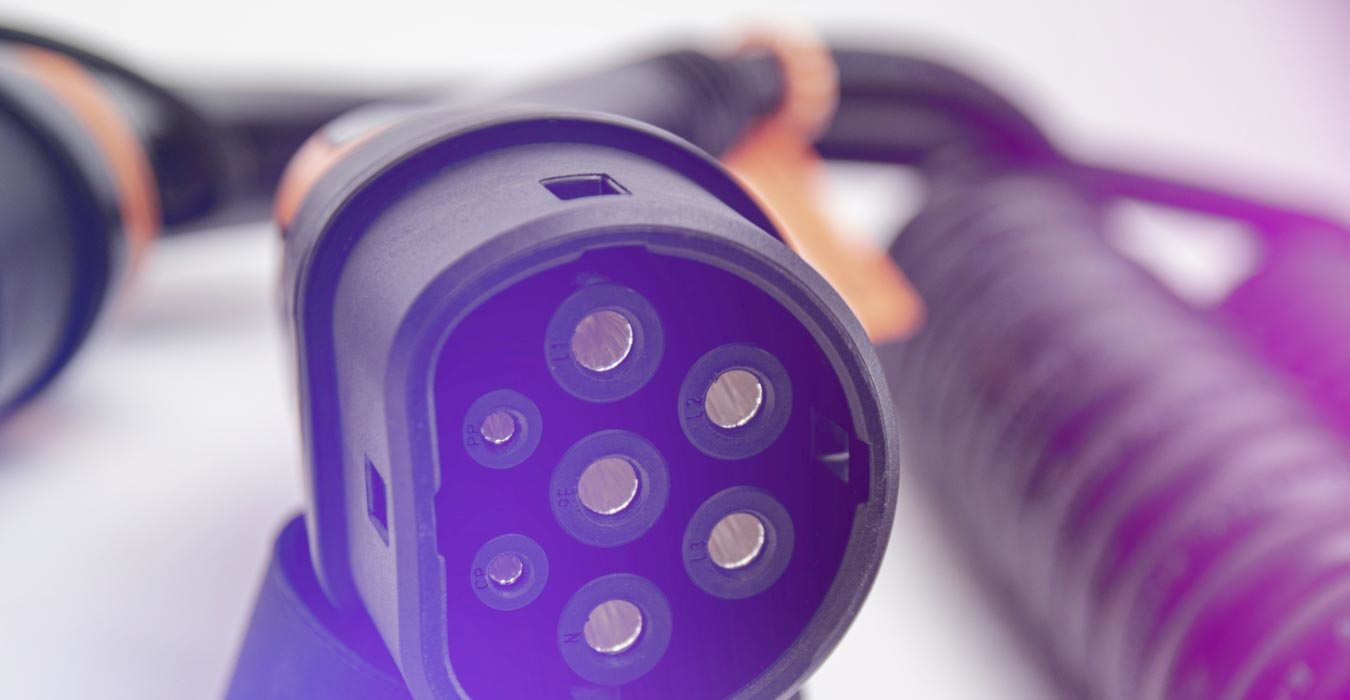
There are different ways to charge an EV. From home charging via a standard socket to fast charging. In this article we will briefly discuss the type of charging cables you will need. These names are often used in electric car brochures and the media, so it's good to know what they mean.
Mode 1 charging cable
Mode 1 cables allow you to charge at home from a standard socket using an extension lead. This type of charging involves plugging the charging cable into a standard 230 volt outlet. Please note: this method of charging does not provide any protection for the user or the electric vehicle as no communication takes place. Moreover, charging takes a long time because it takes place at a low power level. This is often seen as an emergency solution if you do not have access to a charging station somewhere.
Mode 2 charging cable
Mode 2 charging still makes use of a wall socket, but in combination with an integrated protector. This is the 'box' that is integrated into the cable. It maximises the amount of current, usually 10 amps. The mode 2 charging cable is not always supplied with the EV, but even then it may be too long, too short or too thick, so you have to buy another cable. Mode 2 charging is currently the most common way to charge EVs if there is no charging station nearby.
The Mode 2 charging cable is available in several versions. One characteristic is always the box that is connected between the vehicle plug and the connector (ICCB, which stands for In-Cable Control Box). The more advanced version is a mode 2 charging cable with a connector for various industrial sockets of the CEE type. Depending on the type of CEE plug, this allows you to fully charge your electric vehicle with up to 32 amperes in a short time. Please note that the cables behind the socket can also handle this charging speed.
Mode 3 charging cable
Mode 3 charging refers to the use of a public charging station or a home-mounted charging station for EV charging. The standard Mode 3 charging cable supplied with an electric car is sometimes also attached to the semi-public or home charger, after which you do not need a separate Mode 3 charging cable to charge. Currently, Mode 3 is preferred for EV charging as it is the fastest way of charging via alternating current.
The mode 3 charging cable is a connection cable between the charging station and the electric car. In Europe, the type 2 plug has now been adopted as the standard. To be able to charge electric cars with type 1 and type 2 plugs, charging stations are usually equipped with a type 2 connector. To charge your electric car, you will need either a mode 3 charging cable from type 2 to type 2 (for example for the Renault Zoe) or a mode 3 charging cable from type 2 to type 1 (for example for Japanese EVs such as the Nissan Leaf or PHEVs such as the Mitsubishi Outlander and first Opel Ampera).
Mode 4 charging cable
Mode 4 charging is the only way to charge with direct current. This is also much faster. It is also called 'DC fast charging' or simply 'fast charging'. Given the wide range of charging speeds for mode 4 charging (currently starting with portable 5 kW units to fixed charging stations with a minimum of 50 kW, rising to 350 kW), there is sometimes some confusion as to what exactly 'fast charging' is. But simply put, it is AC charging. There are two connector standards in Europe for Mode 4. These are the Japanese CHAdeMO and the European Combo 2 or CCS, which has been chosen as the standard for public charging stations in the EU.
Mode 4 charging cables cannot be bought separately. They are attached to a charging station, just like an old-fashioned petrol pump.





